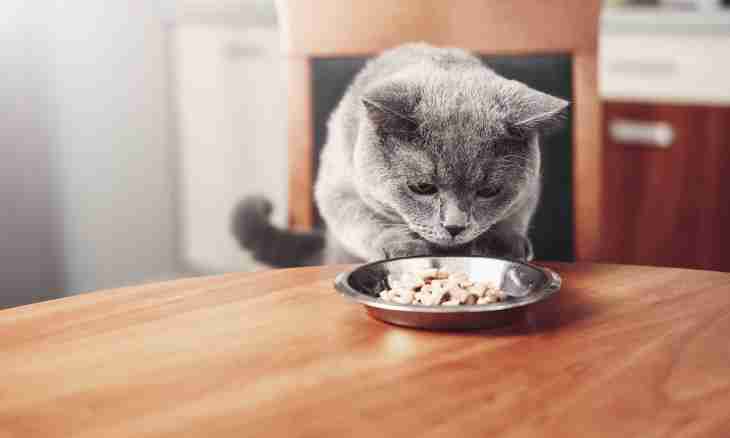Unlike people, cats are not able to put the experiences into words. If your favourite animal ate greedily three-four packages of a forage a day earlier, and now suddenly refuses food - it is an occasion to think seriously of the possible reasons of such behavior and further actions on a solution.
It is required to you
- - vaseline oil
- - immunoperformance-enhancing drugs (like Vitafel)
- - antiviral medicines
- - syringes of standard volume (2, 5 and 10 ml)
- - towel
Instruction
1. Remember whether the cat was imparted from panleukopenia (cat's distemper) - the viral disease which is called also infectious enteritis. Infection with a distemper occurs at contact with excrements or saliva of sick animals. The virus long remains in the external environment (on a grass, etc.) therefore walks on the street can be dangerous to not imparted animal. Disease symptoms: hollow eyes, painful feelings (the cat lies on a stomach all the time, having drawn in under it forepaws), refusal of odes of food and water, foamy vomiting, diarrhea with dark green stool or with blood impurity. The cat can look long at a bowl with water, at the same time the glotatelny reflex works.
2. Take an animal temperature. In order to avoid scratches, wrap a cat in a towel, having left outside only the head and a back part of a trunk. Grease a tip of the ordinary thermometer vaseline (or any other) oil, put a cat on the left side and accurately enter a tip into back pass. Wait 3-5 minutes. Temperature of a healthy cat does not exceed 38 degrees. At panleukopenia temperature increases up to 40-41 degrees. Fall of temperature can speak about muscle weakness and dehydration.
3. Feel a stomach of a cat by a palpation method. For this procedure two are required: one has to hold with two hands front and hinder legs of a cat, another - to make diagnostics. A cat it is necessary to put sideways. Tension of muscles, existence of cones and consolidations signal about increase in lymph nodes of intestines or stagnation of stool.
4. To confirm or disprove the diagnosis and also only the experienced veterinarian will be able to appoint treatment. At the slightest suspicion of infectious enteritis, the cat has to be immediately brought to veterinary clinic. Probability of a lethal outcome is high, however at the timely diagnosis and the correct treatment of death of an animal it is possible to avoid. Usually to a cat are appointed: bed rest, compulsory drink, injections of glucose, immunoglobulin (Vitafel, Immunovet, "Globfel-4", etc.) and antiviral medicines (Fosprenil, Anandin, Kamedon, etc.).
5. If you have no time and desire every time to carry a cat in clinic, you can leave an animal on hospital treatment (that will run very into money) or to give injections independently in house conditions, previously having consulted with the veterinarian about technology of introduction (hypodermically or intramuscularly) and a dosage of medicines. In advance buy syringes and necessary drugs. For performance of injections the tranquility, confidence and accuracy are required. The animal will instantly feel your panic, will begin to worry and escape.
6. The lock can be a reason for refusal specifically of food. At the same time the animal occasionally uses water. Normal the cat has to empty intestines 1-2 times a day. The lack of a chair of more than a day can signal about stagnation of stool. The reasons can be various - a congestion in intestines of the pinched wool, etc. Exit: intake of vaseline oil at the rate of 1 ml on 1 kg of body weight of an animal. Gather oil in the syringe without needle. Ask somebody to take a cat and to open for her a mouth. To avoid hit in airways, pour in medicine on the middle of language, but not in a throat. It is better to give oil on an empty stomach in the morning. Vaseline oil is not soaked up, and only envelops and greases intestines, helping stool to come out a natural way. The result comes 6-8 hours later. If the cat was not emptied, it is necessary to repeat the procedure for the second day. When developing plentiful vomiting and the increased concern of an animal, address the veterinarian.

